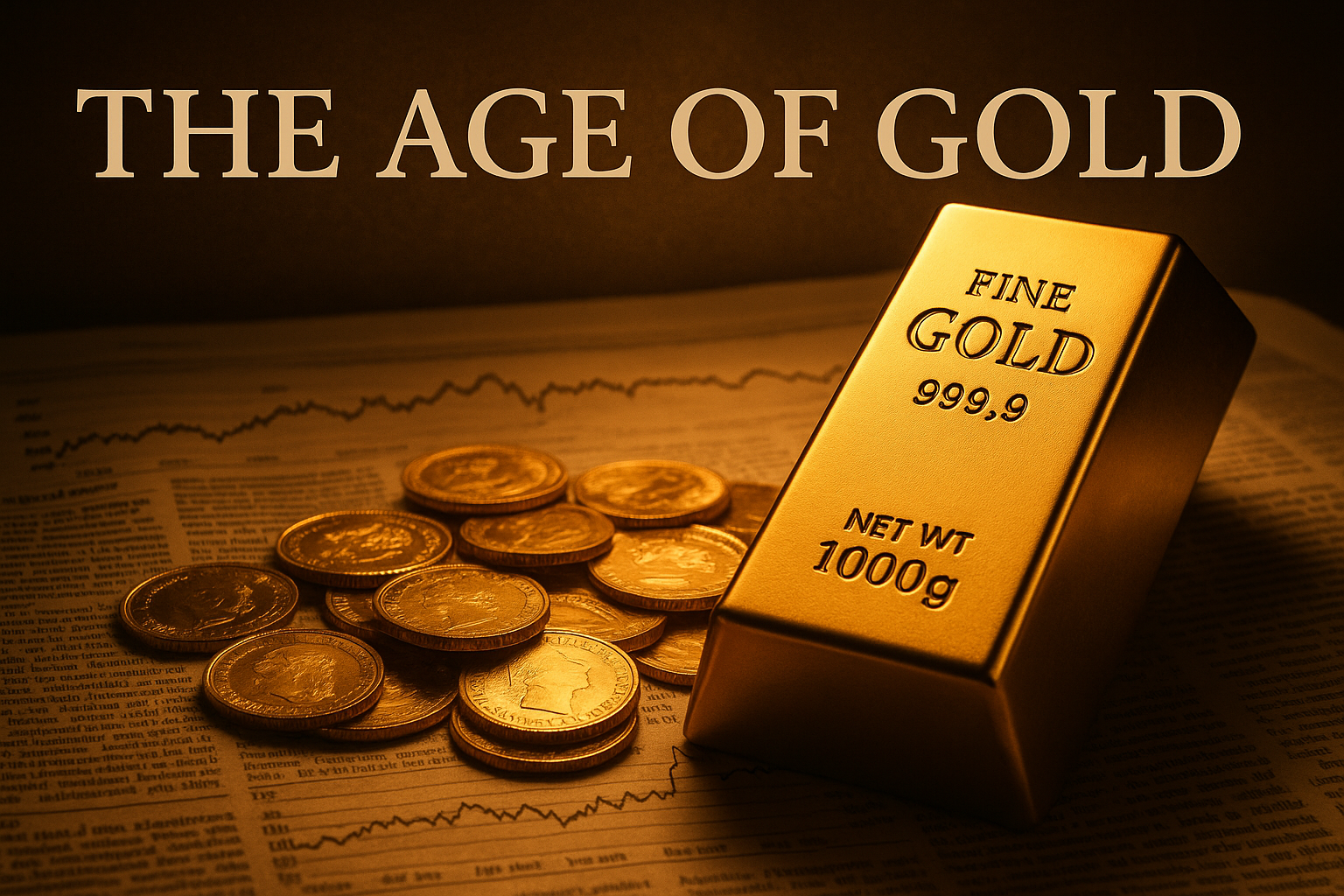Gold has always had a way of returning to the center of the world’s story when everything else begins to wobble. It glimmers in times of chaos, not because it promises growth, but because it promises stability. In 2025, that promise has never felt more valuable.
When gold crossed the $4,000-an-ounce (≈ ₹1,20,000 per 10 grams) mark, the financial world paused. For decades, that number lived only in the fever dreams of gold enthusiasts and doomsday forecasters. Yet here we are — a world that has learned, once again, that when trust erodes, metal endures.
The Rise That No One Saw Coming
Only a year ago, gold was comfortably trading within the $3,200–$3,450-an-ounce (≈ ₹95,000–₹1,00,000 per 10 grams) range, a zone analysts described as its “fair value.” Then, quietly, it began to move. A 14 percent climb since late August, a staggering 47 percent gain since January — and suddenly, a thousand financial models looked obsolete.
But this isn’t a story about prices. It’s a story about fear.
Central banks, sovereign funds, and private investors have all been buying gold as if it were oxygen. The demand isn’t driven by greed — it’s driven by doubt. Doubt in the durability of currencies. Doubt in the promises of policymakers. Doubt in the idea that modern finance, with all its sophistication, can withstand the strain of global debt, geopolitical divides, and fading confidence.
When governments — the ultimate issuers of money — start hoarding a metal they once left behind, it’s not speculation. It’s survival.
The Return of the Old Reserve
Every few decades, history finds a way to remind us that the world runs on faith, not just numbers. During the collapse of Bretton Woods in the 1970s, gold was the last refuge of order. In 2008, as banks crumbled and markets convulsed, it became a haven once again. Now, in 2025, the pattern is repeating — a quiet but coordinated retreat into something ancient and tangible.
Across Asia, the Middle East, and Europe, central banks are racing to strengthen their reserves with gold. Even as prices surge, the buying hasn’t stopped. That alone tells a story — these institutions aren’t chasing profit. They’re buying insurance.
For many nations, gold has become more than a hedge against inflation; it’s a hedge against dependence. It’s the one asset that isn’t bound by another country’s currency, another nation’s debt ceiling, or another government’s political will.
The Indian Conundrum
For India, gold’s golden run is both a blessing and a burden. The Reserve Bank’s vaults gleam brighter — their holdings are now valued at over ₹4.3 lakh crore, a 57 percent rise in just a year. But the same metal that strengthens the nation’s reserves also strains its balance sheet.
Every $100 (≈ ₹2,990 per 10 grams) increase in gold prices adds pressure to India’s import bill, widening the current account gap. The RBI has slowed its purchases, adding only about four tonnes this year — a sharp fall from the 45 tonnes added in 2024. Yet, even with that restraint, the country cannot ignore what’s happening.
As China, Turkey, and Gulf nations aggressively expand their holdings, India faces a strategic question: will caution today mean vulnerability tomorrow? The quiet race for monetary autonomy has already begun — and the currency of trust, it seems, is once again gold.
A Hedge Against Uncertainty
Gold’s ascent is not about inflation anymore. It’s about insecurity. The world is searching for something that cannot be printed, sanctioned, or erased. Cryptocurrencies once tried to claim that role, but volatility and regulation dulled their shine. Gold, on the other hand, never needed validation. It doesn’t promise returns. It promises endurance.
Each bar of gold locked away in a central bank’s vault is more than a financial asset — it’s a statement. It says: We no longer believe the system is unbreakable.
The Meaning of the Moment
Gold at $4,000 (≈ ₹1,20,000 per 10 grams) is not just an economic event; it’s a reflection of our collective psychology. It tells us that trust — the invisible force that holds markets, currencies, and entire nations together — is fraying. And when trust thins, humanity always returns to something it can touch, weigh, and believe in.
In a world awash with digital assets, fiat debts, and political uncertainties, gold’s message is simple, timeless, and quietly defiant:
You can’t print me. You can only own me.
The yellow metal has reclaimed its throne — not as a relic of the past, but as the conscience of a financial system that forgot its limits.
This isn’t a gold rush. It’s a gold reckoning.
Feel free to share your experiences and insights in the comments below. Let’s continue the conversation and grow together as a community of traders and analysts.
By sharing this experience and insights, I hope to contribute to the collective knowledge of our professional community, encouraging a culture of strategic thinking and informed decision-making.
As always, thorough research and risk management are crucial. The dynamic nature of financial markets demands vigilance, agility, and a deep understanding of the tools at your disposal. Here’s to profitable trading and navigating the election season with confidence!
Ready to stay ahead of market trends and make informed investment decisions? Follow our page for more insights and updates on the latest in the financial world!
For a free online stock market training by Yogeshwar Vashishtha (M.Tech IIT) this Saturday from 11 am – 1 pm, please sign up with https://pathfinderstrainings.in/training/freetrainings.aspx
Experience profits with my winning algo strategies – get a free one-month trial with ₹15 lakh capital! – https://terminal.algofinders.com/algo-terminal
Disclaimer
This article should not be interpreted as investment advice. For any investment decisions, consult a reputable financial advisor. The author and publisher are not responsible for any losses incurred by investors or traders based on the information provided.


